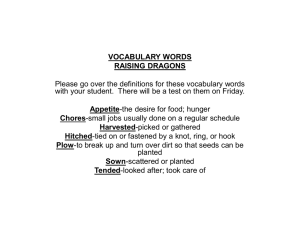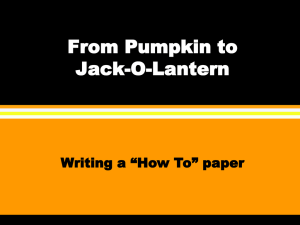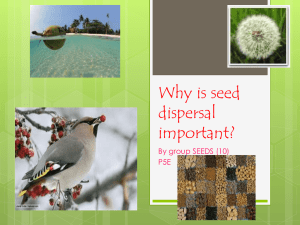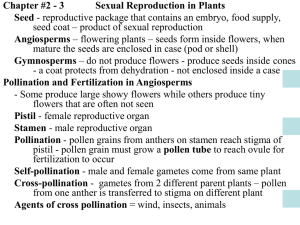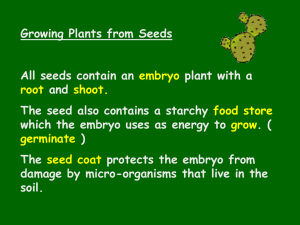Seed Dispersal powerpoint
advertisement
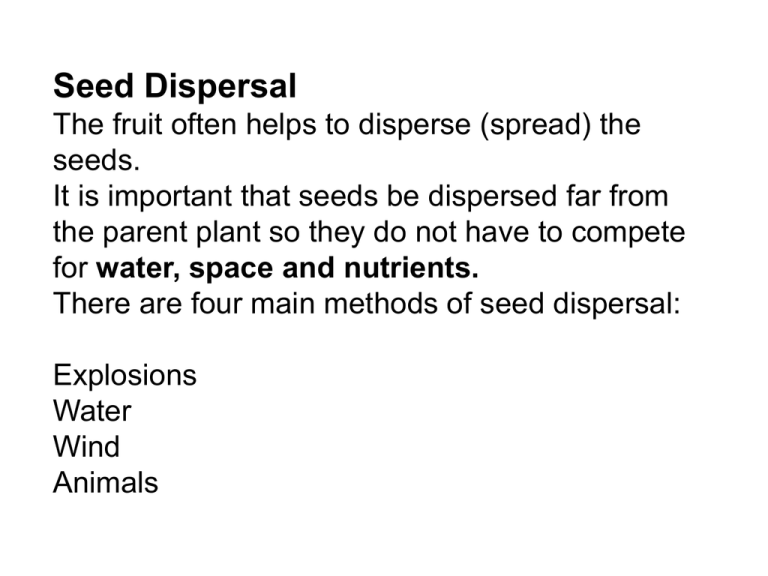
Seed Dispersal The fruit often helps to disperse (spread) the seeds. It is important that seeds be dispersed far from the parent plant so they do not have to compete for water, space and nutrients. There are four main methods of seed dispersal: Explosions Water Wind Animals The seeds of flowering plants vary in size. Some are as small as grains of salt (Foxglove), while others may be almost the size of golfballs (Horse Chestnuts). The difference in size reflects differences in the amount of food stored inside the seed for the baby plant. Usually, the larger the seed, the more food reserves it contains. There is a down-side to having large seeds. The larger and heavier the seeds, the more difficult it becomes to disperse by wind, or explosions. Larger wind-dispersed seeds need parachutes or wings to help keep them floating. The largest and heaviest wind-dispersed seeds, cannot rely on parachutes to keep them floating. Instead they have developed a wing which causes them to spin through the air like mini helicopters. The biggest seeds of all cannot possibly be dispersed by the wind. Large seeds such as nuts, are often dispersed by animals which collect them to eat. Animals hardly ever eat all the seeds. Some will usually be overlooked, leaving them to germinate wherever they have been left when conditions are right. Explosion…... • Some plants distribute their seeds by ‘popping’ them out. Example: Gorse Water………. Some plants that live near water have fruits that float and are carried by water. Example: Coconuts Wind......... Seeds dispersed by the wind must be light and small. Plants have developed different adaptations to help the seeds be released and to stay in the air for longer: 1. Salt shaker type The fruit becomes a dry hollow container with holes. The containers are shaken by the wind, scattering the seeds. Example: Poppy seeds 2. Parachute type Feathery hairs help the seed to float on the wind.They can often be carried long distances in this way. Example: Ragwort 3. Winged type Wings on the fruit make it spin as it falls. This spinning delays its fall so that the wind may carry it some distance away. Example: Sycamore Animals......... 1. Some plants have hooks to which the seed is attached. These hooks easily get caught in the fur of passing animals. Example: Burdock 2. The small hard seeds inside many fruit, pass through the gut of animals and and is expelled in the droppings. Example: Blackberries 1.How are these seeds dispersed? 2. How are these seeds dispersed? 3.How are these seeds dispersed? (2mm long) 4. How are these seeds dispersed? 5. How are these seeds dispersed?



